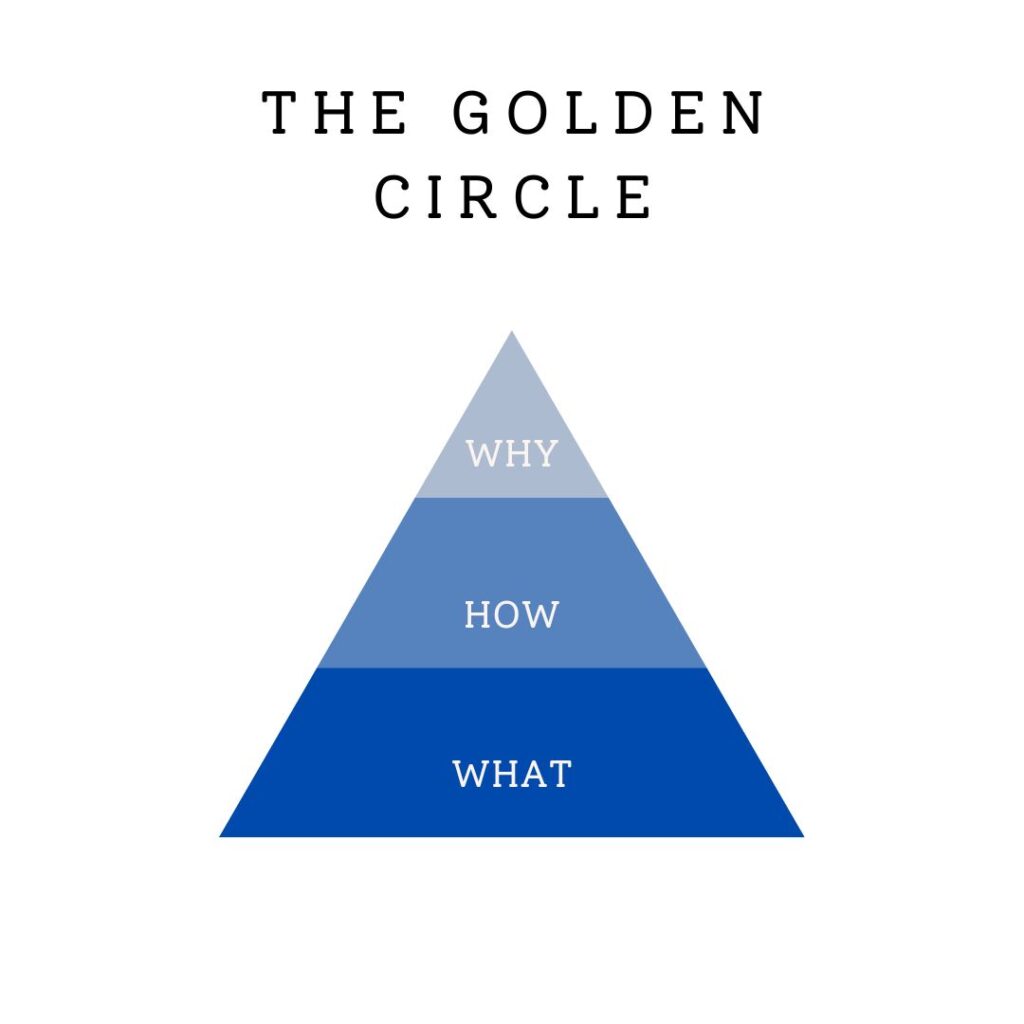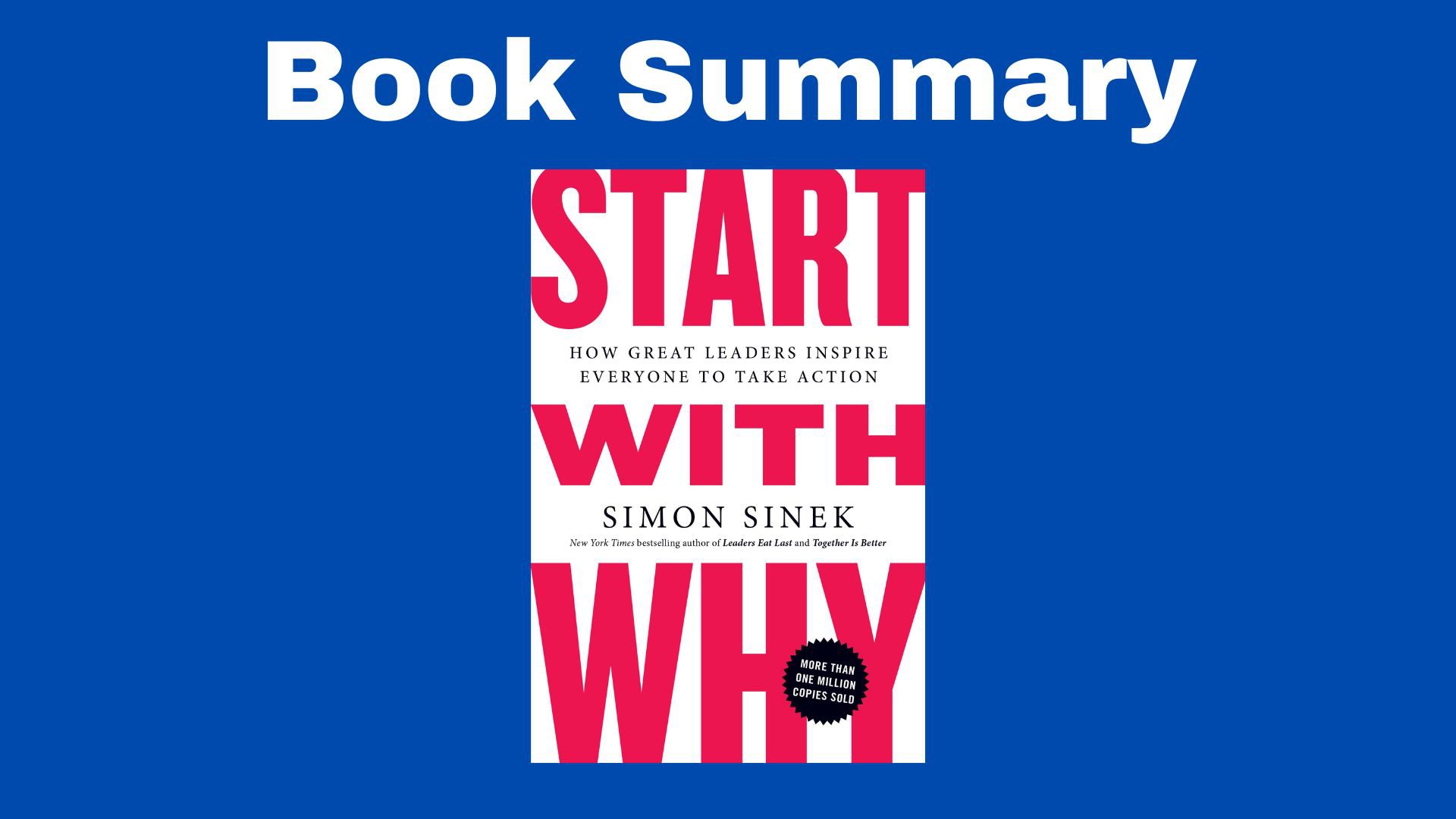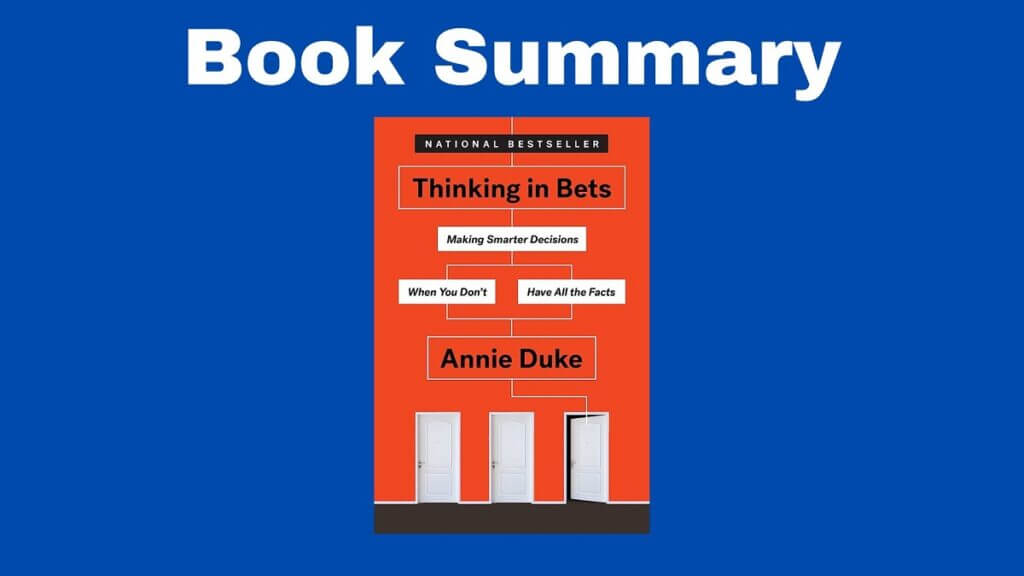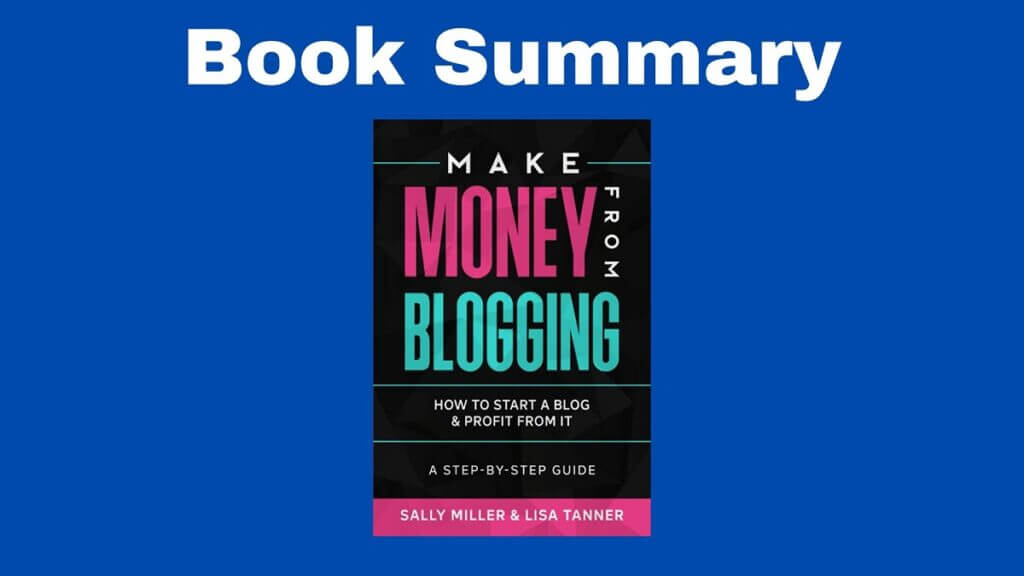The Book in Three Sentences
In this book summary of Start with Why, Simon Sinek encourages people to ask the why behind their organization. Unless people understand the why of a product, service, or movement, they’ll never buy from you. Sinek also introduces the idea of the Golden Circle, a framework that states that while most corporations know the what, and some know the how, few know the why.
Start with Why Summary
Introduction: Why Start with Why
Leaders have the ability to inspire others. To succeed, you need to be motivated and have a strong work ethic, but more importantly, you need to inspire others. Start with Why, Simon Sinek says.
In business, there are usually a lot of people doing the same thing, but only a few succeed. The ones who do, succeed because they inspire. Examples include Apple, the Wright brothers, and Martin Luther King. Inspiring others is special and sets apart the few from the many. People who inspire are more innovative and profitable.
Part 1: A World that Doesn’t Start with Why
Chapter 1: Assume You Know
We have a tendency to make assumptions based on false or incomplete facts. Our decisions are based on what we think we know. When trying to achieve their goals, most people gather data and use it to make smart and right decisions. But we can still make decisions from an inaccurate perception of the world. To get better results, we must gather even more data and this means listening to podcasts, asking experts, attending conferences, and reading books. Missing a small but essential detail can lead to a mistake. To achieve more in life, design problem-solving from the beginning instead of having to deal with the problem after the fact.
Chapter 2: Carrots and Sticks
Most companies don’t know why their customers buy from them. This means most businesses make decisions based on incomplete or wrong assumptions. To influence human behavior you can manipulate or inspire. Although it has a negative connotation, manipulation is a common tactic in business.
Some manipulation strategies include:
- Dropping the price is an effective tactic. The problem is that once customers get used to paying a low price, it’s hard to make them pay more. The seller, on the other hand, feels the pressure to lower the price more and their margins become smaller over time. Dropping the price is fine as long as you stay profitable.
- Promotions are such an effective manipulation tactic that most people forget they’re being manipulated in the first place. The idea is to add something for free so that a customer will buy from them.
- Fear is the most powerful manipulation strategy available. The idea is that by not buying a product, you might be in danger.
- Aspirational messages sell us something we desire. These messages are positive in nature, but to achieve the promised results, we have to put in quite the effort.
- When a product boasts the fact that professionals use it, or that it has millions of customers, these are forms of peer pressure.
- The last example we have includes novelty and innovation. Innovation is revolutionary and it changes society. Examples include iTunes, the microwave oven, and the fax machine. Novelty, on the other hand, is just a flashy feature, such as the camera on a smartphone. It encourages sales but doesn’t have a lasting feature.
Manipulations work in the short term, but they don’t generate loyalty. Loyalty is when a customer doesn’t even bother to research the competition. Manipulations lead to transactions, but not necessarily to loyalty which means that most people will buy from you once and that’s it. Loyalty means that both your customers and employees “have your back”. Whether we like it or not, manipulations work, but there’s an alternative.
Part 2: An Alternative Perspective
Chapter 3: The Golden Circle

The Golden Circle explains human behavior. It shows how some leaders inspire instead of manipulate. The components of the Golden Circle are the following:
- WHAT: Everyone knows WHAT they do. This is the easiest part.
- HOW: The HOW determines how something is different or better. This is less obvious than the WHAT.
- WHY: Few people and companies can explain WHY they do what they do. The WHY is the cause, purpose, or belief. Inspired companies and leaders have a clear WHY.
Instead of explaining from the WHAT to the WHY, you should start from the inside out. Always start with WHY. As a consequence, your message will be different and people will want to buy from you. By Starting with WHY, people hear your cause first and then the rest. The HOW and the WHAT don’t generate loyalty, the WHY does. In fact, the WHAT and the HOW can easily be copied, but not the WHY. People buy the WHY, not the WHAT.
When Creative released the Zen, the company marketed it as a “5GB MP3 player”. When Apple marketed the iPod, they marketed as “1,000 songs in your pocket”. While Creative focused its message on the WHAT, Apple focused on the WHY.
To maintain lasting success, innovation, and flexibility, you need to know your WHY. By knowing your WHY, you inspire rather than manipulate.
Chapter 4: This Is Not Opinion, This Is Biology
One of the basic human needs is our need to belong. Belonging makes us feel connected and safe. When a company clearly communicates the WHY, we want their products in our lives. Our brain’s neocortex is rational, analytical, and language-centered. It focuses on the WHAT. The limbic brain drives behavior and encourages us to do irrational things. It focuses on the HOW and WHY.
Chapter 5: Clarity, Discipline and Consistency
Mother Nature is all about balance and so is the Golden Circle. When there’s no WHY, there’s a sense of imbalance that causes instability in the entire system, affecting both buyer and seller. Even if there’s a WHY, there has to be a balance among all the parts and they should be in the right order. There has to be clarity and you achieve it by knowing WHY you do WHAT you do. Then, you must know HOW to do it, these are your values, and answering it is one of the hardest things to do. Values should be verbs and they tell us how to act under certain conditions.
The WHAT is the results of your actions. When you have a clear WHY, you don’t have to follow your gut, decisions are made because there’s a clear context.
Part 3: Leaders Need a Following
Chapter 6: The Emergence of Trust
Trust is something you do by balancing your WHY, HOW, and WHAT. Leaders are those who have followers who want to follow them. To be successful, you have to want to win, not for yourself, but for the greater good. We develop trust by sharing values and beliefs. This is what being part of a culture is. It’s the case for countries, but also for companies. The best companies are those that have a strong sense of values. It’s not about having a skill, it’s about believing in certain principles.
Success happens when you hire people that share the same values as you. To find people like that, focus on the WHY and not the WHAT. They won’t for it for you, they’ll do it for themselves. You have to hire people who are passionate about your cause and have an attitude that belongs to your culture. The best companies hire already motivated people and give them something to believe in.
You can be doing the same thing as someone else, but if you have a sense of purpose, you feel like you belong there because you are part of a higher cause. You can have everything in the world (money, education, recognition), but if you don’t know the WHY, you lack the most important thing.
An organization or culture that has a common set of values generates trust. Personal recommendations make a difference, but we’re more likely to trust the people who share our beliefs.
Chapter 7: How a Tipping Point Tips
In the 2000 book Tipping Point, author Malcolm Gladwell analyzed how tipping points happened. This is something the Law of Diffusion already considered. Our population is divided into innovators, early adopters, early majority, late majority, and laggards. Innovators challenge the rest to see the world differently. Early adopters recognize valuable ideas and try new technologies as soon as they can. They trust their intuition and are willing to pay a premium price to prove a point. The early majority is comfortable with new ideas, and the late majority is uncomfortable with new ideas, but what makes them similar is that both of them are practical. Laggards reject change at all costs. The distance between the early adopters and the early majority is called the “chasm”. It’s hard to cross the “chasm” unless you know WHY.
Part 4: How to Rally Those Who Believe
Chapter 8: Start with WHY, But Know HOW
To inspire, you don’t need energy, you need charisma. Charisma is difficult to define, measure, and copy. All great leaders have charisma because they have a clear WHY.
From a three-dimensional point of view, this is what the Golden Circle looks like:

In the pyramid, the WHY represents the belief and it’s usually embodied by the CEO. The HOW are all the actions you take to realize that belief and the HOW is usually represented by the senior executives. Finally, the WHAT are the results of those actions.
- WHY-Type people are visionaries and leaders.
- HOW-type people are practical and like building things. Most people are HOW-types.
For a message to have a lasting impact, it needs to promote a higher cause. The WHY must be clear.
Chapter 9: Know WHY. Know HOW. Then WHAT?
Many things in an organization change, but your WHY never does. At the bottom of the Golden Circle Pyramid sits the marketplace. This is chaotic and includes the customers, the press, shareholders, suppliers, money, and the competition. The company has to eloquently articulate the WHY to the marketplace. Usually, the leader is in charge of doing this, but as the company grows, the leader is the source of the message and nothing else. That said, there’s no difference between the leader and the company, the message is exactly the same.
Chapter 10: Communication Is Not About Speaking, It’s About Listening
Symbols have meaning because we give them meaning. It has meaning in our minds, otherwise, a thing is just a thing. A symbol gets its power from a clear purpose. Examples of symbols include flags, logos, the London double-decker bus, and a cowboy hat, to name a few. It’s almost impossible to determine what a symbol means because the marketplace will decide this for you.
You can’t copy someone else’s WHAT or HOW and achieve the same level of success. Your practices are a reflection of the consistency your WHAT and HOW have with your WHY. Filter all of your decisions through your WHY.
Part 5: The Biggest Challenge Is Success
Chapter 11: When WHY Goes Fuzzy
Achievement (the WHAT) and Success (the WHY) are two different things. Achievement involves reaching something. It’s clearly defined and concrete. Success, on the other hand, is a feeling. It’s elusive and intangible.
Chapter 12: Splits Happen
Most companies start with an idea and ideas a driven by passion. Success is a challenge for most organizations because when a company is big, most decisions come from different sources and the WHY dilutes. When this happens there’s a split and the company has to recapture the WHY and inspire people again or else they’ll become irrelevant.
Part 6: Discover WHY
Chapter 13: The Origins of a WHY
The author discovered the concept of WHY after his business failed and he decided to teach it to others.
Chapter 14: The New Competition
In business, we always compete against others and want to be better than them. What we should do instead is be better than ourselves. Work to inspire others, not to beat the competition.
Afterword
Leaders have followers. They lead people, not companies. Leaders must have a vision of a world that’s yet to exist and a convincing way to communicate it. That vision is our WHY. Leaders don’t have great ideas and can do little by themselves, but they start with WHY and they inspire action.
Further Reading
If you liked this summary of Start with Why, you might also like:




